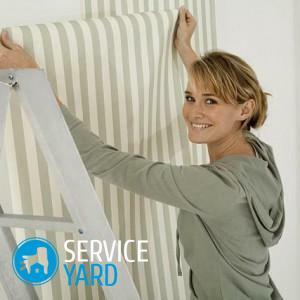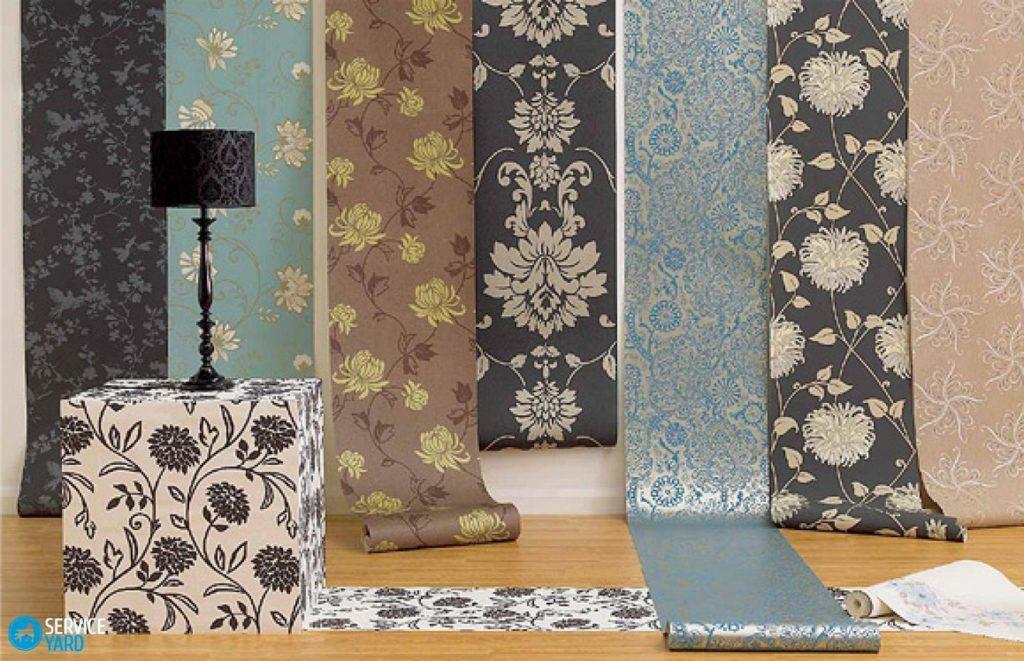
- Getting ready for work
- Adhesive non-woven wallpaper
If you picked up wallpaper from nonwoven for decorating a living room, bedroom or another room in your house, you probably did it deliberately, having preliminary weighed the pros and cons of different materials. It is these canvases that perfectly hide small defects, are perfectly washed, stand out by the resistance to stretching, drying, deformation. And they can easily emphasize the chosen design, because the variety of coatings of this type is very large. But all these dignities will be fully appreciated only if you know exactly how to glue flizeline wallpaper with your own hands. It is with this stage of finishing that we will understand this article, so that you can decorate the interior qualitatively and beautifully.
to the contents ↑Getting ready for work
Sticky non-woven wallpaper by yourself is much easier to perform than, for example, finishing with paper wallpaper. This is due to the fact that the structure of the paintings with such a core has thickenings. Due to this, careful roughing with labor-intensive walls is not necessary - small irregularities will disappear due to the density of the decorative coating. But still there are several organizational moments that need to be puzzled before the repair begins. We will dwell on them in more detail.
Tools
Even before you glue the non-woven wallpaper yourself, you need to prepare a complete set of tools. That nothing, from what you may need, do not forget, adhere to the following list:
- Roulette - the minimum length should be 5 m;
- Building level - it is possible to use both liquid and more modern laser variant;
- Roller, with a long pile on the roller.
- Grid for cleaning it.
- Spatulas - will be required as narrow on a metal base, and wide of plastic.
- Brush, plummet, pointed knife.
- Foam sponge, pencil, ruler.
- Buckets or suitable containers for preparing glue and for clean water.
We prepare the walls
As we have already mentioned, thorough walling work is not necessary for gluing flizeline wallpaper by oneself. It is only necessary:
- to remove the old decorative coating;
- clean the dust and remove the main garbage.
Important! If you decide to do everything thoroughly and wash the walls, wait until the substrate dries.
And here's the next stage of preparation - markup, it's better not to miss. Here you will facilitate your further work. Step by step you act like this:
- Check the height of the surfaces in different planes and on one wall. This is necessary in order to then accurately cut the wallpaper of the desired length and prevent the formation of unaesthetic gaps.
- Next, make vertical markings on the entire surface of the walls with a pencil, plumb line and ruler. In this case, you stand one step - either equivalent to 1 meter, or the width of the coverage you have chosen.
Important! This markup will be used when gluing fliseline wallpaper by yourself. So you spend less time adjusting the position of individual strips of material and their docking.

We prepare the wallpaper:
- We lay out the roll with an even strip on a horizontal surface.
- We measure the required length, which should be equal to the height of the walls plus a gap of 5-10 cm.
- Roll and cut the pieces from the roll on only one side.
- We get as a result the number of stripes of non-woven wallpaper, which is necessary for pasting the entire area of the walls of your room.
Important! Cutting is done extremely accurately and accurately, especially if you took a material with a complex large pattern. The picture as a result on the walls should turn out to be whole.
Choosing a good adhesive
When gluing walls with non-woven wallpaper, the quality of the adhesive solution is very important. He must keep a sufficiently long and heavy canvas on the walls. And here the big role is played by the manufacturer of a building mix. Well-established products of such brands:
- Pufas. Among the range of adhesives of this brand there is a special series designed specifically for such wallpapers. Since the work can be done both privately with their own hands, and with the use of special equipment, carefully pay attention to the information and marking on the package.
Important! Pufas EURO 3000 with an indicator is a real find for those who want to paste non-woven wallpaper with their own hands. Color pigments in the composition will not allow you to miss a single centimeter of the surface. Its composition ensures optimal sliding of the canvas, hardening up to 5 minutes and no traces on the finished surface.
- Quelyd - this means the French manufacturer, which is in demand on a par with the goods of the above-described company. These funds do not have a sharp odor, do not spread, glide well, they evenly grasp the coatings on the walls.
Important! If we talk about shortcomings, then the glues of this brand are very expensive, besides they are not very convenient for the user - 350 g.
- Metylan. This German manufacturer also delivers to the market special solutions for non-woven wallpaper. Manufacturing is carried out on different plant sites, but the quality remains unchanged.
Important! Users note the stability of quality, the correspondence of the actual consumption indicated by the company on the packaging, and also the ease of use due to the presence of pink indicators.
- Lacra. The products of the Russian company, which is an excellent alternative for those who seek not to lose on quality, but to save at the same time. Low price, correct setting speed, stable fluidity, ease of use, even if you need to paste thick, embossed and heavy non-woven wallpaper with your own hands.
Important! The only nuance when using adhesives of this brand is a small discrepancy between the actual consumption declared by the manufacturer.
- Emcol Universal. Adhesives of this brand are universal, so they will be very appropriate in the event that you are going to combine non-woven wallpaper with other types of coatings, artificial stone.
Adhesive non-woven wallpaper
The very process of gluing takes much less time than all the preparatory measures. You will see for yourself if you follow the recommendations from this manual:
- You glue the entire area of the wall with glue, moving from the corner to the first line of the marking.
Important! Take into account that the adhesive solution must be applied only on the wall - the material of the decorative coating itself is not soaked.
- You glue the first sheet. Correct at once its position in such a way that the vertical of the strip clearly coincides with the marking line.
- Well smooth the wallpaper by guiding the roller from top to bottom and from the center to the edges of the wallpaper strip.
Important! Do not skip this step so that you do not have to fight with air bubbles.
- Remove excess adhesive at the edges with a foam rubber sponge.
- Next, in turn, glue the remaining strips, applying the material to the butt.
Important! A small overlap can only be done in the corners. When pasting fleece wallpaper directly to the area of the walls, this is not necessary. The material is not stretched or compressed, respectively - no gaps are formed.
- When everything is seized, carefully align the line along the skirting boards.
With the help of the information in this article, you can now make yourself a clear work plan, properly organize the process of preparing and pasting walls with non-woven wallpaper. We hope that little effort has been spent and you are already enjoying the beautiful interior that has become the fruit of your work.
